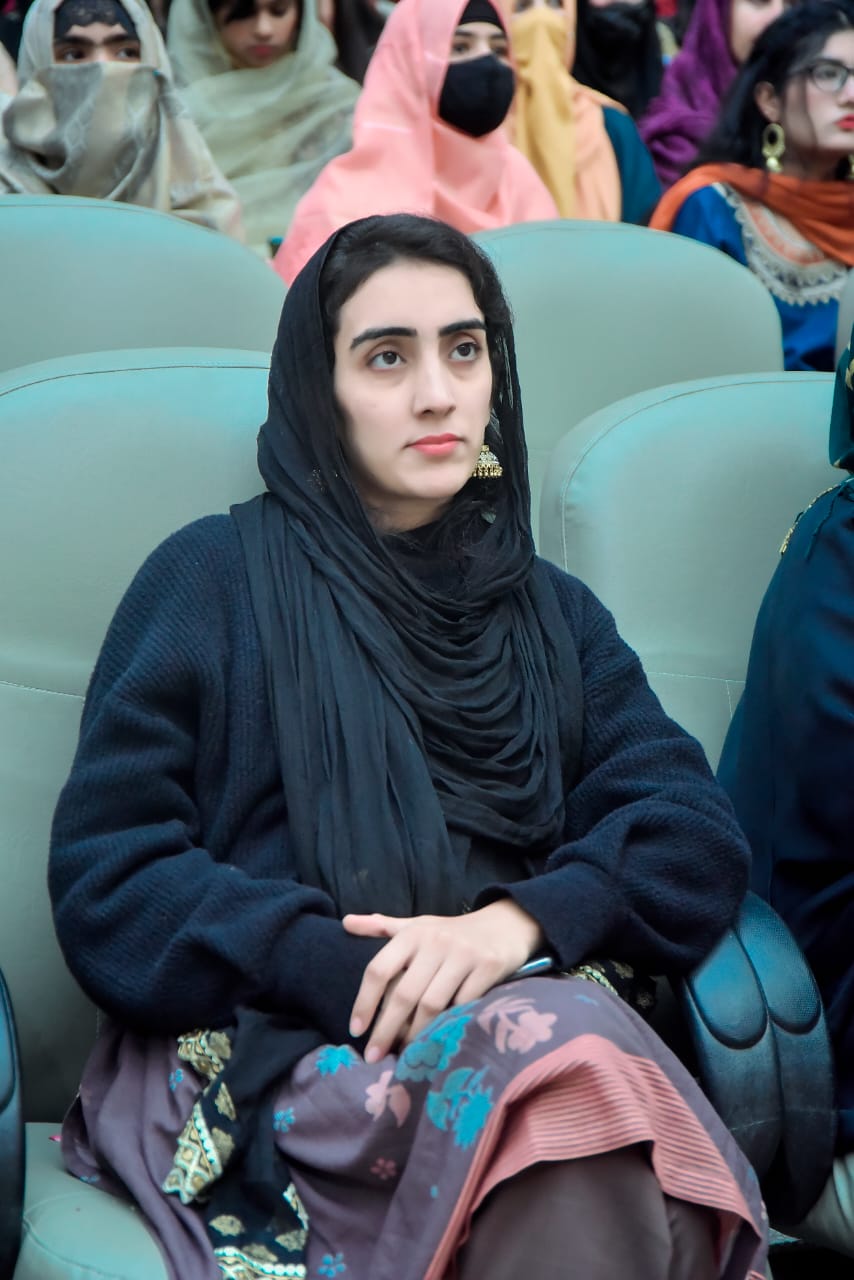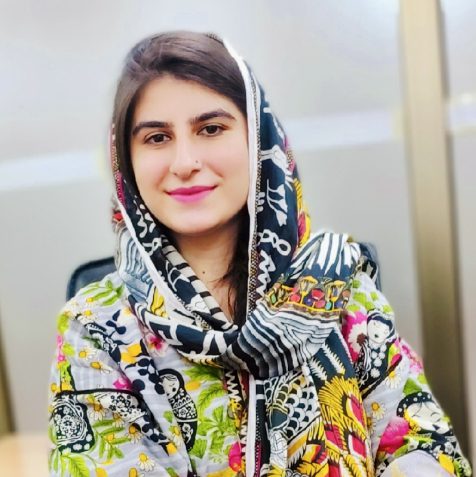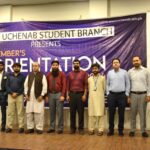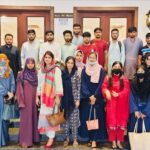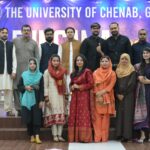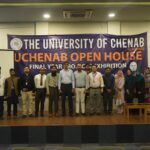Bachelor's
Computer Science (BS)
Duration
4 years full-time
Qualification
Bachelor of Science in Computer Science
Credit Hours
130
Academic Session
Spring and Fall
Program Overview
At the University of Chenab, we design an approach to the study of an Undergraduate degree program namely BS Computer Science (BS-CS). This course is exclusively available to provide stimulating, broad field knowledge. It gives knowledge about all the emerging computer technologies to create a mixture of everything. Hence, it counts the theory to application at the foundation and modern levels. This hence in turn, prepare students for higher learning and state-of-the-art training.
Duration of Program
Pursuing a full-time, four-year degree in Computer Science holds excellent job prospects across a number of demanding careers. Students can have employment as computer scientists, software developers, programmers, system analysts, web developers, as well as user experience designers. They can hence work in a variety of business, engineering, industrial, governmental, as well as scientific environments.
The systematic study of computer science aims to develop a practical knowledge of computing skills. This is an understanding which will give you the ability in the areas of system programming, artificial intelligence, algorithm analysis, as well as system design. This course will meanwhile enable you to acquire a cutting-edge experience of computer science at the research, development, as well as planning levels.
Main Goal Of Program
Our Computer Science (CS) degree will nurture generations of new talent with the most modern technical and scientific developments in computer science fields. You will also learn the mechanization of methodical procedures. This includes with acquisition, storage, processing, and access to information systems. As Computer Science is a field teeming with innovation, it aims to build a solid foundation in computational methods and computational problem solving. It also teaches about fundamental principles of system software and the limits of computing. course structure offers a flexible mixture of core/compulsory and optional modules. Through the optional module, you may choose to spend a year in a research exchange program, which will help you throughout your career.
Tuition Fee
Mainly tuition fees majorly covers our study cost, which includes assessment and teaching. Advanced fees are taken before the academic semester. If the university takes fees directly then you can choose the installment methods to pay your fees.
Additional course costs
You may be charged an extra cost of additional things such as books, stationery, recreational and study trips, and other materials.
Fee Structure Fall 2025
Department of Computer Science
Fee Structure Fall 2025
Bachelor of Science in Computer Science
| Category | Details |
|---|---|
| Semester | First |
| Courses | 7 |
| Credit Hours | 16 |
| Tuition Fee/Cr. Hr. | 6,400 |
| Tuition Fee/Semester | 102,400 |
| Enrolment Fee | 3,500 |
| Examination Fee | 3,500 |
| Medical Diagnostic Charge | 500 |
| Societies & Club Fee | 2,500 |
| Total Semester Fee | 112,400 |
| Semester | Second |
| Courses | 9 |
| Credit Hours | 17 |
| Tuition Fee/Cr. Hr. | 6,400 |
| Tuition Fee/Semester | 108,800 |
| Enrolment Fee | 4,500 |
| Examination Fee | 4,500 |
| Medical Diagnostic Charge | 500 |
| Societies & Club Fee | 2,500 |
| Total Semester Fee | 120,800 |
| Semester | Third |
| Courses | 9 |
| Credit Hours | 19 |
| Tuition Fee/Cr. Hr. | 6,600 |
| Tuition Fee/Semester | 125,400 |
| Enrolment Fee | 4,500 |
| Examination Fee | 4,500 |
| Medical Diagnostic Charge | 500 |
| Societies & Club Fee | 2,500 |
| Total Semester Fee | 137,400 |
| Semester | Fourth |
| Courses | 10 |
| Credit Hours | 18 |
| Tuition Fee/Cr. Hr. | 6,600 |
| Tuition Fee/Semester | 118,800 |
| Enrolment Fee | 5,000 |
| Examination Fee | 5,000 |
| Medical Diagnostic Charge | 500 |
| Societies & Club Fee | 2,500 |
| Total Semester Fee | 131,800 |
| Semester | Fifth |
| Courses | 11 |
| Credit Hours | 17 |
| Tuition Fee/Cr. Hr. | 6,800 |
| Tuition Fee/Semester | 115,600 |
| Enrolment Fee | 5,500 |
| Examination Fee | 5,500 |
| Medical Diagnostic Charge | 500 |
| Societies & Club Fee | 2,500 |
| Total Semester Fee | 129,600 |
| Semester | Sixth |
| Courses | 12 |
| Credit Hours | 18 |
| Tuition Fee/Cr. Hr. | 6,800 |
| Tuition Fee/Semester | 122,400 |
| Enrolment Fee | 6,000 |
| Examination Fee | 6,000 |
| Medical Diagnostic Charge | 500 |
| Societies & Club Fee | 2,500 |
| Total Semester Fee | 137,400 |
| Semester | Seventh |
| Courses | 6 |
| Credit Hours | 15 |
| Tuition Fee/Cr. Hr. | 7,000 |
| Tuition Fee/Semester | 105,000 |
| Enrolment Fee | 3,000 |
| Examination Fee | 3,000 |
| Medical Diagnostic Charge | 500 |
| Societies & Club Fee | 2,500 |
| Total Semester Fee | 114,000 |
| Semester | Eighth |
| Courses | 4 |
| Credit Hours | 10 |
| Tuition Fee/Cr. Hr. | 7,000 |
| Tuition Fee/Semester | 70,000 |
| Enrolment Fee | 2,000 |
| Examination Fee | 2,000 |
| Medical Diagnostic Charge | 500 |
| Societies & Club Fee | 2,500 |
| Total Semester Fee | 77,000 |
| Total | Courses: 68, Credit Hours: 130 |
| Total Semesters Fee | 860,400 |
| Registration Fee (payable once – Non Refundable) | 20,000 |
| Total Fee | 980,400 |
Funding
We offer several fully and partially funded undergraduate scholarships to full-time undergraduate students. Visit Funding Policy for further queries.
Teaching
In BSCS Computing, we use various methods of teachings through classroom activities including a combination of lectures, tutorials, lab sessions, seminars, workshops, online learning, as well as independent study. In addition to these workshops, online learning and seminars are also part of it. Mode of communication is English.
This program structure has a total number of thirty to thirty-two lectures and about 3 hours per week. Hence, this allocation is for the teaching and sixteen labs. Each lab consists of three hours of lab practice per week. You will get the guidance about the studies, mainly about time for preparing classes. This also includes completion of research projects, as well as reading of primary texts. Meanwhile, this program has an appropriate positive learning environment for quality composing work to take place.
Mainly evaluation will be concluded by extensive monitoring of written examination and course work completion along with routine quizzes, individual assignments, and group tasks i.e. programming such as writing, research and presentation.
Careers
Students from the Department of Computer Science can hence start their careers in the any of following industries and companies:
- Automobiles and Aviation Toyota, Suzuki, Honda, Cavalier
- Computer Systems NetSol, TechAbout, KalSoft, Techlogix
- Computer Security TISS, Tier3, PakCERT, Catalytic Security
- Consumer goods Nishat, Ashabi, Stallion Textile Mills
- Finance SBP, NBP, HBL, MCB
- Software Beltok, Nets Tech, Webicosoft, Glowlogix
Research Higher Education Institutions
Bachelor of Computer Science degree holders are hence eligible for pursuing their Postgraduate degrees in the subject of Computer Science and its related areas and thus become further capable for the job of Computer Science researcher, Web Developer, Software Engineer, System Analyst, University academic, Economist, Statistician, as well as many others.
They can pursue roles such as:
- Software engineer
- Systems analyst
- Investment analyst
- Web designer/developer
- Business analyst
- Actuary
- Economist and statistician
- Computer science researcher
- University academic
- Teacher
- Entrepreneur
- Start-up owner
Helping you find the right career
Meanwhile, we have the facilities of devoted career counselors who help you to select your career choices as well as assist you in preparing for various recruitment programs. You can hence be a part of career fest programs which are an interactive session with the recruiters so, you can understand their requirements as well as criteria.
Our vision is to be an international partner in computing education, research and development. Well, our graduates should be impacting society as computing professionals and entrepreneurs should highlight professional integrity and leadership.
Department works with a clear mission to provide the country with trained resources. High-tech products and services are available to exercise commercialization through incubation of high-tech companies.
- To produce best quality Computer Science & IT professionals and researchers by providing state-of-the-art training, hands on experience, and healthy research environment.
- Collaborate with industry and academia around the globe for achieving quality technical education and excellence in research through active participation of all the stakeholders.
- To promote academic growth by establishing Center of Excellences as well as offering inter-disciplinary postgraduate and doctoral programs.
- Establish and maintain an effective operational environment and deliver quality, prompt, cost effective and reliable technology services to the society as well as compliment the local and global economic goals.
- Making world class technology available to undertake large and complex IT Projects in Pakistan
- Exercising commercialization through incubation of high tech companies.
Currently, the Department is offering the following undergraduate and postgraduate degree programs:
2024
Ejaz, S., Baig, R., Ashraf, Z., Alnfiai, M. M., Alnahari, M. M., & Alotaibi, R. M. (2024). A deep learning framework for the early detection of multi-retinal diseases. PLOS ONE, 19(7), e0307317.
Shaukat, F., Ejaz, N., Ashraf, Z., Alnfiai, M. M., Alnahari, M. M., & Alotaibi, R. M. (2024). GenVis: Visualizing Genre Detection in Movie Trailers for Enhanced Understanding. IEEE Access.
Ashraf, Z., Sohail, A., & Iqbal, M. (2024). Design and Implementation of Lightweight Certificateless Secure Communication Scheme on Industrial NFV-Based IPv6 Virtual Networks. Electronics, 13(13), 2649.
Mahmood, Z., Ashraf, Z., Iqbal, M., & Farooq, B. (2024). User-trust centric lightweight access control for smart IoT crowd sensing applications in healthcare systems. Personal and Ubiquitous Computing, 28(2), pp. 1-14.
2023
Ashraf, Z., Sohail, A., Hameed, A., Farhan, M., Alotaibi, F. A., & Alnfiai, M. M. (2023). Robust and Lightweight Remote User Authentication Mechanism for Next-Generation IoT-based Smart Home. IEEE Access 11, pp. 137899 – 137910
Ashraf, Z., Mahmood, Z., & Iqbal, M. (2023). Lightweight Privacy-Preserving Remote User Authentication and Key Agreement Protocol for Next-Generation IoT-Based Smart Healthcare. Future Internet, 15(12), 386.
Ashraf, Z., Sohail, A., & Yousaf, M. (2023). Lightweight and authentic symmetric session key cryptosystem for client–server mobile communication. The Journal of Supercomputing, 1-25.
Ashraf, Z., Sohail, A., & Yousaf, M. (2023). Robust and lightweight symmetric key exchange algorithm for next-generation IoE. Internet of Things, 22, 100703.
Ashraf, Z., Sohail, A., Latif, S. A., Pitafi, A. H., & Malik, M. Y. (2023). Challenges and Mitigation Strategies for Transition from IPv4 Network to Virtualized Next-Generation IPv6 Network. Int. Arab J. Inf. Technol., 20(1), 78-91.
Butt, U. M., Arif, R., Letchmunan, S., Malik, B. H., & Butt, M. A. (2023). Feature Enhanced Stacked Auto Encoder for Diseases Detection in Brain MRI. Computers, Materials & Continua, 76(2).
Ikram, A., Butt, M. A., & Tariq, I. (2023). Comparative Analysis of Regression Algorithms used to Predict the Sales of Big Marts. Journal of Innovative Computing and Emerging Technologies, 3(1).
Butt, M. A., Danjuma, S., Ilyas, M. S. B., Butt, U. M., Shahid, M., & Tariq, I. (2023). Demand Prediction on Bike Sharing Data Using Regression Analysis Approach. Journal of Innovative Computing and Emerging Technologies, 3(1).
2022
Butt, U. M., Ullah, H. A., Letchmunan, S., Tariq, I., Hassan, F. H., & Koh, T. W. (2023). Leveraging Transfer Learning for Spatio-Temporal Human Activity Recognition from Video Sequences. Computers, Materials & Continua, 74(3).
Butt, U. M., Letchmunan, S., Hassan, F. H., & Koh, T. W. (2022). Hybrid of deep learning and exponential smoothing for enhancing crime forecasting accuracy. Plos one, 17(9), e0274172.
Baig, R., Rehman, A., Almuhaimeed, A., Alzahrani, A., & Rauf, H. T. (2022). Detecting malignant leukemia cells using microscopic blood smear images: a deep learning approach. Applied Sciences, 12(13), 6317.
Fatima, M., Rextin, A., Nasim, M., & Yusuf, O. (2022, October). Digital Information Seeking and Sharing Behaviour During the COVID-19 Pandemic in Pakistan. In Multidisciplinary International Symposium on Disinformation in Open Online Media (pp. 44-62). Cham: Springer International Publishing.
Prince Sultan University, Riyadh, Saudi Arabia
King Saud University, Riyadh, Saudi Arabia
Taif University, Taif, Saudi Arabia
- University of Kotli, Kotli, Azad Jammu & Kashmir
- IQRA University, Islamabad Campus, Islamabad
- RIPHAH University, Islamabad Campus, Islamabad
- COMSATS University, Sahiwal Campus, Sahiwal

Department of computer science has built strong linkage with industry and signed various MOUs with different software houses for jobs and internships.
Recently the University of Chenab has signed MOUs with following software houses.
- KMS Enterprise Solutions in Canada
- Techno Verse
- Twin Spider
- Dev Valley
- Cipher Coders
- Soft Pin
- Huawei ICT Academy
- Gujrat Chamber of Commerce and Industries
Lead By
Ambience
Peaceful ambience, agile teaching as well as non-teaching staff, and a disciplined yet enjoyable and motivating atmosphere. Welcome to the University of Chenab. We produce professionals who are adept in their disciplines. Our institution is not only concerned with grades and education, but also take care of mental well-being of our students.The University of Chenab
Our Mission
The University of Chenab represents excellence in teaching, research, scholarship, creativity and engagement. Its mission is to produce professionals outfitted with the highest standards in creativity, transfer and application of knowledge dissemination to address issues of our time.
The UChenab sculpts its graduates to become future leaders in their fields to inspire the next generation and to advance ideas that benefit the world.
The University of Chenab
Our Vision
Recognization
The University of Chenab, Gujrat aspires to become a nationally and internationally recognized university that distinguishes itself as an embedding center for outstanding ethical and moral values, teaching quality, learning outcomes, and richness of the student experience. The University of Chenab, Gujrat envisions a transformative impact on society through its continual innovation in education, creativity, research, and entrepreneurship.Finding Your
Course
How to Apply?
- Visit (Website link admission tab) and search your respective course and department on this website.
- Check the admission criteria and learn about the eligibility criteria of your selected course.
- If you are confused about the fee structure visit our fee guide at (link)
- To search more about the campus and studies visit other events and tabs to learn about the latest news and events.
- Still if there are any ambiguities then contact our admission office.
Apply Online
- Search the page and select your course scroll to the menu and click on and option ‘Apply.’
- Fill the online application form with the required attachments.
- After the form is submitted then you’ll receive a confirmation email. Confirm your application which is then processed forward.
- After the acceptance of the online registration a date and time is allocated for an in-campus test.
- You must bring your original attested documents on your test day.
- After sometimes the results are out so constantly check your email for the notification.
- Visit the campus for enrolment.
- After the enrolment attend your orientation day as it is an interactive session among students and the faculty.
- Then, receive your timetable.
- Finally, start a new step of your carrier.








